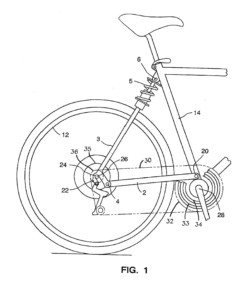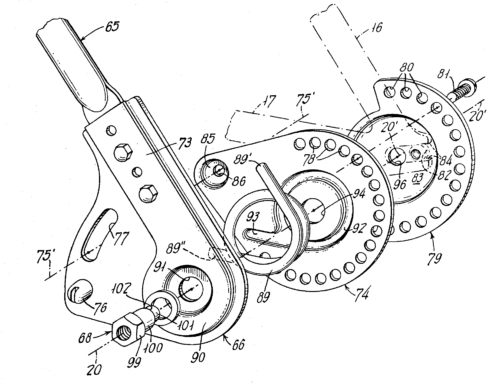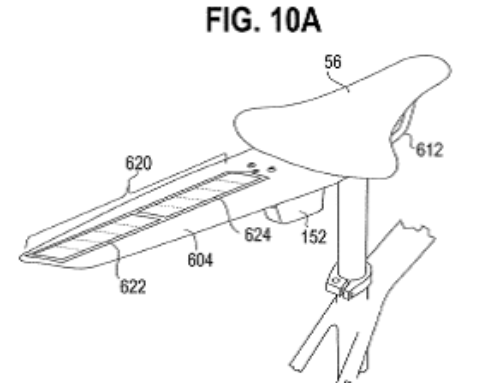
When a product is covered by a patent, exactly what sort of exclusivity does a patent holder have — for instance, with US patent law and bicycles? Under US law, a patent provides the right to exclude others from making, using or selling the invention throughout the United States, as well as the right to prevent others from importing the invention into the United States.
Notice the phrases: throughout the United States, and importing the invention into the United States. US patent s don’t have coverage outside of the US, and likewise patents in other countries don’t matter in the US. Intellectual property such as patents operate on a country-by-country basis.
To best understand how patents work in the global marketplace, and how this can affect which bike products are sold in which countries, a quick primer on the patenting process is helpful. Many US companies, as well as some foreign companies, start by filing a US provisional application. Within one year of filing the provisional, a full non-provisional utility application must be filed – which can be both in the US and in foreign countries. Alternately, a common option taken is submitting an international application called a PCT, which preserves the right to file in most countries (Taiwan being a notable exception for the bicycle industry) for an additional 18 months. Or, start by filing a patent application in your home country (say Italy), then follow the same path internationally.
To pursue a patent in a specific country, a patent agent or attorney licensed in that country must be hired. The local agent/attorney will fine-tune the application to meet national requirements, and have translations of the original documents done (if applicable). Filing and annuity fees are due to the patent office in each country. Then the complex back-and-forth process between agents/attorneys and each patent office proceeds, with arguments about patentability. If and when the application is approved, more money is due to each patent office. Europe is more streamlined, with the central European Patent Office (yes, EPO – no snickers) reviewing all applications. But then substantial fees are due to each European country where want coverage is desired.
The takeaway is clear: patenting is a complicated, expensive process. Even companies with extremely valuable technology don’t pursue patents in every country they plan to sell in. Rather, they take a strategic look at where markets and competitors are located. For instance, having a patent in a tiny country like Luxembourg may not be worthwhile, particularly if you have patent coverage in other EU countries like neighboring France and Belgium, where distribution centers may be located. It’s not just US patent law and bicycles, but a global web.
For performance -related bicycle products, the most significant target markets are well-known: Europe and the US. But the country-by-country system is also where things can get complicated. Take for example, the current conflict between Wahoo Sports and Zwift over smart trainer technology. Zwift’s Hub trainer is a re-branded version of theVolt trainer from Australian company JetBlack. In October 2022, Wahoo accused both Zwift and JetBlack of patent infringement. But in December 2022, Wahoo told BRAIN that they had settled the lawsuit with JetBlack. JetBlack agreed not to sell its Volt trainer in the US and Europe, where Wahoo says it has related patents. Presumably, in JetBlack’s home market of Australia, as well as numerous other countries, Wahoo did not file for patents. In those locations, JetBlack would be free to make and sell their trainer – which delves into the area of public domain.
A common misconception with patents is that if a company (or individual) doesn’t file a patent application for their invention, than someone else can swoop-in and “steal” rights to the design. And indeed, it would be exactly that: stealing. Not surprisingly, patent laws around the world are built to prevent such theft. In general, if an invention has been publicly disclosed (such as selling it, showing it, publishing details of it) by one party, that prevents a second party from being granted a patent on the invention.
With the above trainer example, if Wahoo didn’t pursue Australian patent coverage, the technology would then be in the pubic domain there – anyone would be free to make, use, or sell the invention in Australia. And, no one else could patent the invention.
It’s also noteworthy that Wahoo didn’t enforce its patent against JetBlack in the US until JetBlack started supplying trainers to Zwift. JetBlack’s Volt surely sold in relatively small numbers in the US compared to what would be expected from sales through Zwift. Perhaps the Volt trainer wasn’t even a blip on Wahoo’s radar screen. Or maybe it was, but the company chose to ignore JetBlack, as they didn’t consider the Aussie company a major threat. Zwift ‘s Hub trainer rang the alarm bells though, with the lawsuit resulting, and the Volt trainer as collateral damage.
Another example, as I mentioned in a previous Patent Watch article, is the “Horst link” rear suspension design – a great example of US patent law and bicycles. The four-bar suspension design was available on some bikes sold in Europe for years before the US patent (owned by Specialized) expired, which then allowed the import of those bikes to the U.S. What led to that? In in 1992, inventor Horst Leitner and his company, AMP Research, filed a US provisional application, which later issued into three related US patents. AMP also filed patent applications in Europe in 1994, but by 1997 the applications were withdrawn and abandoned – presumably due to cost. In 1998, Specialized acquired the US patents from Leitner, but Euro rights had already been lost. The moral of the story: deep pockets are needed for patent protection across the major markets.
While information about what is patented where can readily be found on the internet via patent office sites and commercial intellectual property search tools. But interpretation of those patents, including US patent law and bicycles, requires extensive review by a company’s patent counsel – what’s referred to as a freedom to operate opinion. For instance, companies certainly don’t announce where they don’t have patent coverage for particular products. That’s up to competitors to figure out, at their own considerable expense.
With so much manufacturing occurring in China, patent protection in that one country would in principle be a very strong piece of intellectual property. If an inventor could limit a Chinese manufacturer’s ability to fabricate a product, that would be a one-country solution to controlling a technology that might be suitable for sale globally. While China issues plenty of patents, enforcement of rights in that country is well-known as being highly difficult.
A version of the article first appeared in Bicycle Retailer and Industry News

